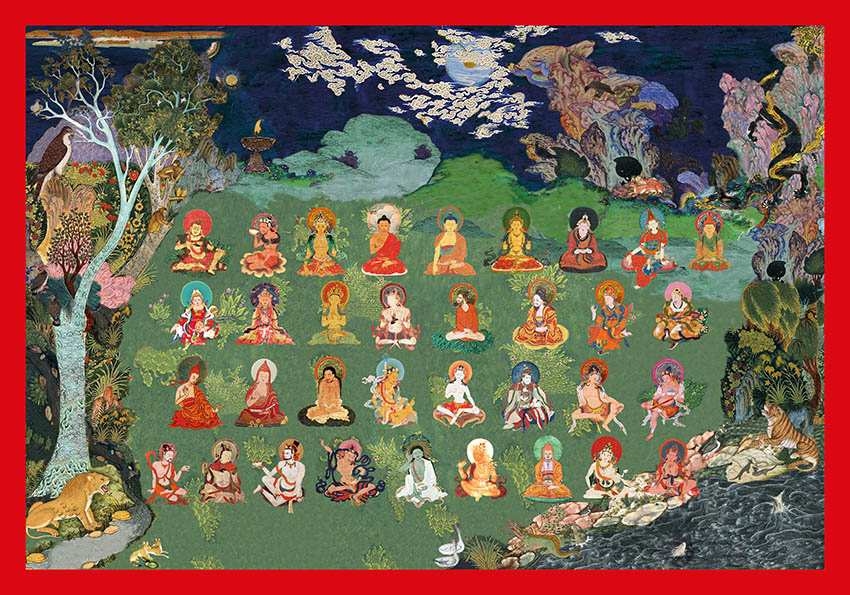
The Scythian Empire[1]
In the late 8th and early 7th centuries BCE, Scythian warriors conquered and unified most of the vast Eurasian continent, creating an innovative empire that would give birth to the age of philosophy and the Classical age across the ancient world – in the West, the Near East, India, and China. Mobile horse herders who lived with their families in wheeled felt tents the Scythians made stunning contributions to world civilization – from capital cities and strikingly elegant dress to political organization and the world-changing ideas of Buddha, Zoroaster, and Laotzu – Scythians all.
At its height, the Scythian Empire stretched west from Mongolia and ancient northeast China to northwest Iran and the Danube River, and in Central Asia reached as far south as the Arabian Sea. The Scythians also ruled Media and Chao, crucial frontier states of ancient Iran and China. By ruling over and marrying the local peoples, the Scythians created new cultures that were creole Scythian in their speech, dress, weaponry, and feudal sociopolitical structure. As they spread their language, ideas, and culture across the ancient world, the Scythians laid the foundations for the very first Persian, Indian, and Chinese empires.
Looking at the hard data, the directionality of change (and thus development) of Eurasian civilization was radial, from Central Eurasia outward to the periphery: at the onset of the Classical Age, with the Scythians; at the onset of Late Antiquity, with mainly Huns and Goths in the West (in the Western Roman Empire) and mainly Sienpi and Mongolic peoples in the East (in North China). It was the same at the onset of the revolutionary Middle Ages, with the Avars, Magyars, Turks and Tibetans of Central Eurasia and the Vikings and Franks from the Central Eurasianized north of Europe, plus the Arabs from the south, and at the onset of the Renaissance, with the Turks and Mongols. The beliefs, practices, customs, technology, and sometimes even the clothing fashions of the Central Eurasians accompanied them and were followed by them in the peripheral lands.
[1] This article contains excerpts from the book by Christopher I. Beckwith: The Scythian Empire
Scythian Philosophy and the Classical Age
The single most famous shared feature of Classical culture in all of the nations that experienced a “Classical Age” is the appearance of philosophy in the strict sense, with a capital “P”: Philosophy. It was a new and unprecedented thing, and that particular period in the mid-first millennium BC is the only time in history that Philosophy flourished so spectacularly in those cultures. To put it another way, no other “Age of Philosophy” ever happened there before or since, and each culture’s Classical Age happened at about the same time as its Age of Philosophy.
Could philosophy be a Scythian invention too? The first part of this chapter shows that the Greeks, Persians, Indians, and Chinese were each taught by an early Scythian philosopher and thus experienced Scythian philosophy first-hand at about the same time, before there is any other sign of philosophy per se in the lands where they taught. The second part of this chapter considers the concept of the Classical Age; an ancient period when philosophy uniquely flourished outside Central Eurasia, the Scythians’ homeland.
Scythian Philosophy
The first great philosophers of Greece, China, India, Iran, and Scythia, who flourished between approximately 600 and 400 BC, were revolutionaries. They did something entirely new and unprecedented: all of them criticized and rejected the traditional beliefs and practices of the countries Where they taught. They were not just “philosophers”. Each one was arguably his adoptive culture’s earliest Philosopher—in the strict modern sense of that word—with the addition that in Antiquity philosophers were expected to practice their philosophy. Chronologically, they are:
1. Anacharsis the Scythian, a half-Greek Scythian who taught in Greece.
2. Zoroaster, a Scythian speaker who taught in the Scytho-Mede Empire.
3. Gautama the Scythian Sage (Gautama Shakyamuni), who taught in northern India.
4. *Gautama (Lao-tan – Laotzu), who bears a Scythian name and taught in early China.
Quite a lot has been written on each philosopher discussed here, but each is usually treated as if he belonged to a much later dominant local tradition, if he even existed. Thus Anacharsis is supposed to have been a Greek Cynic, Zoroaster a Late Zoroastrian Persian dualist, Buddha an Indian pupil of Brahmanists and jains, and Laotzu a mystical and inscrutable Chinese political theorist. However, the most striking thing about these thinkers is their unusually insightful, strictly Philosophical teachings on remarkably similar themes. Although we know almost nothing historical about them, the earliest accounts agree on one point: each of them was a foreigner in a country where his ideas differed from local ideas, but where he achieved success. And surely the most remarkable historical fact about them is that they were Scythians.
